We have much more to do and your continued support is needed now more than ever.
Feeder Friends: A Few Birds You’ll Want to Meet
I remember my backyard growing up as a natural wonderland, flowers abuzz with bees, bugs under stones and squirrels chasing each other around. Yet, somehow, I don’t remember the birds! My fierce basketball games must have scared them away.
I’ve made up for lost time. The feeders at NWF’s HQ have inspired me to be a kid again, watching and learning. February is National Bird Feeding Month, and I wanted to highlight a few of my favorite feeder friends. Share which species you’ve met after offering food (feeders or native plants) for birds in your yard!
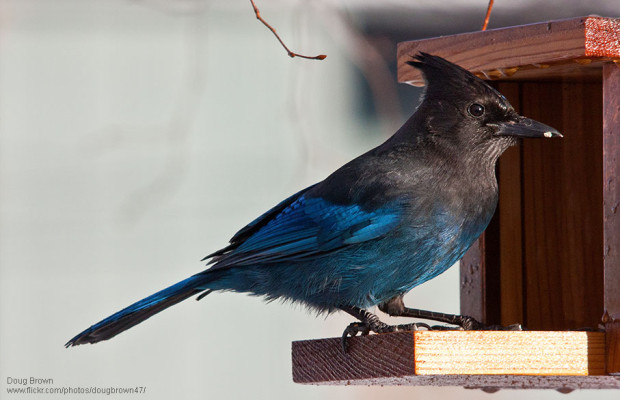
Black-capped Chickadee (Poecile atricapillus)
The black-capped chickadee is a feeder friend that you’ll see even in the most frigid weather conditions. You can attract these tiny wonders to your yard with suet or sunflower seeds.

Rufous Hummingbird (Selasphorus rufus)
This bird is a common visitor to hummingbird feeders and flowers. Don’t let their size fool you, rufous hummingbirds are extremely territorial and feisty. They’ve been observed chasing off other hummingbird species and chipmunks!
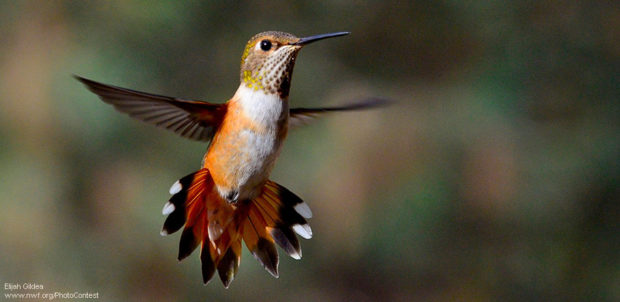
Blue Jay (Cyanocitta cristata)
Recently I learned that the black markings across the blue jay’s face and throat vary significantly. In fact, it may help them recognize each other! Blue jays prefer tray or hopper feeders, which are effective for large bird species or to accommodate several birds feeding at once.

Brown-headed Nuthatch (Sitta pusilla)
The brown-headed nuthatch has two very strong legs that allow them to navigate up and down tree trunks. They’re also one of the few bird species to use a tool (a piece of bark) to find food.

Pileated Woodpecker (Dryocopus pileatus)
Woodpeckers are my personal favorite feeder visitors. They prefer suet feeders, but enjoy other seeds or nuts as well. If you have dead or dying trees on your property, consider leaving them for woodpeckers and other wildlife.
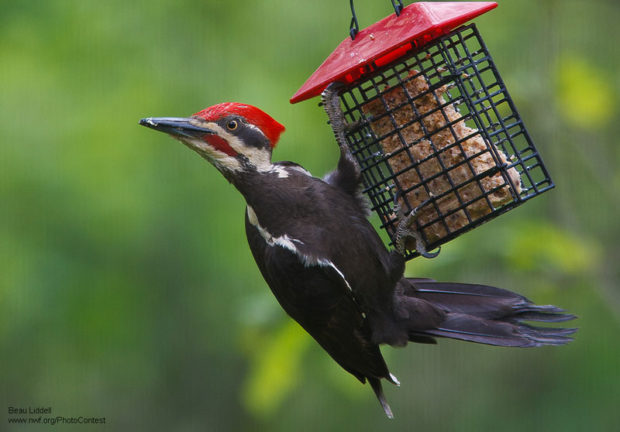
American Goldfinch (Spinus tristis)
These bright beauties switch their wardrobe twice a year, the only finch species to do so. As strict vegetarians, American goldfinches can be lured to your yard with native plants such as sunflowers and thistles. They’re also happy to eat seeds that fall to the ground from your feeders!
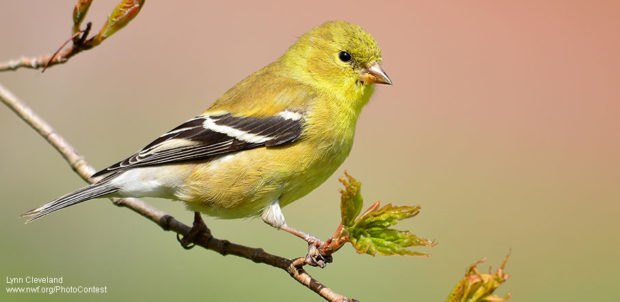
Bonus Visitors
When you put food out for birds, you also welcome a host of other wildlife species into your yard. You can always try to outwit squirrels and other furry visitors, or enjoy the show!
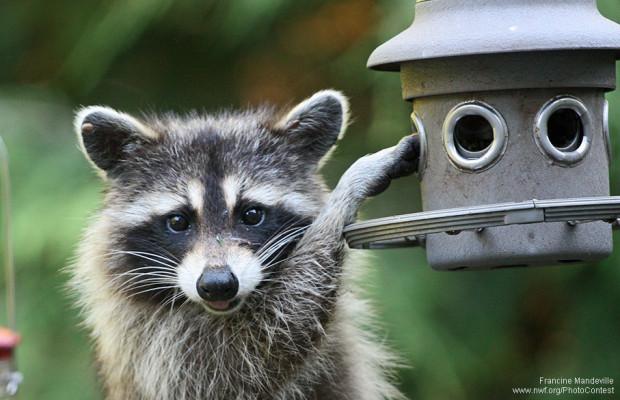
How to Meet More Feeder Friends
Whether you’re a beginner or a veteran, there are a number of resources available to help you turn your yard into a bird-friendly habitat. Here are a few to get started:
- Guide to Choosing the Best Bird Seed
- A Beginner’s Guide to Backyard Bird Feeding
- 10 Ways to Deal with “Bully Birds”
- How-to Make a Milk Jug Bird Feeder
- Bird Feeding 101 Guide
- Tips for Winter Bird Feeding
- How to Take Beautiful Bird Photographs
- Project FeederWatch Guide to Feeder Birds
![]() Symbolically adopt a feeder friend: Eastern bluebird, black-capped chickadee, American goldfinch, Northern cardinal, ruby-throated hummingbird. Your symbolic adoption helps support our work to protect wildlife!
Symbolically adopt a feeder friend: Eastern bluebird, black-capped chickadee, American goldfinch, Northern cardinal, ruby-throated hummingbird. Your symbolic adoption helps support our work to protect wildlife!
![]() Providing feeders or other food for wildlife is the first step toward a Certified Wildlife Habitat!
Providing feeders or other food for wildlife is the first step toward a Certified Wildlife Habitat!





















